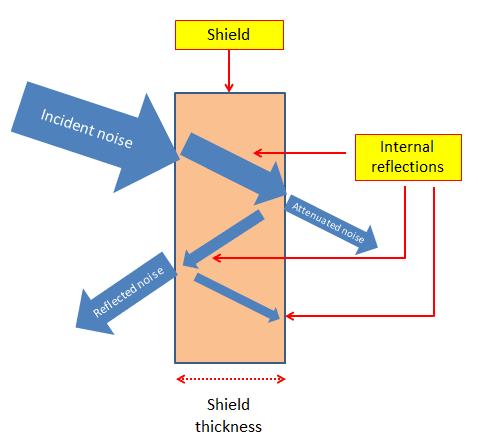
Electromagnetic Interference (EMI) is electromagnetic radiation generated by electronic devices or systems that can disrupt the normal operation of other equipment or cause electromagnetic compatibility (EMC) issues. EMI can be generated in several ways:
- Conductor Radiation: The movement of current on internal wires and cables can radiate electromagnetic fields, generating EMI. This radiation can propagate to other devices or power grids through cables, wires, and other conductors.
- Equipment Radiation: Electronic devices or systems themselves can produce electromagnetic radiation. For example, RF transmission equipment, wireless communication devices, televisions, and computers all generate radiated electromagnetic fields that can interfere with the normal operation of other equipment.
- Transient Interference: During switching operations, power-up, or shutdown of electrical equipment, electrical transients such as voltage and current spikes can occur. These transients introduce high-frequency noise, which can interfere with other devices through conduction or radiation.
- Ground Loops: When current flows through a ground wire or other shared conductors on a device, it can create ground loop interference. This type of interference can result from poor grounding system design or shared ground paths.
- Magnetic Field Coupling: The flow of current creates a magnetic field. When other devices or conductive media are within this field, electromagnetic coupling can occur. This coupling can interfere with other equipment via conductors such as cables, wires, and sensors.
The list above covers typical sources of EMI, but in practice, the origins are diverse and related to the device's circuit design, placement, grounding system, and signal transmission lines. To mitigate EMI problems, it is crucial to consider EMC design principles and measures, such as adding filters, proper grounding design, shielding, and isolation.
Basic EMI Shielding Techniques
When dealing with electromagnetic interference, the following are some simple methods that can be used for shielding:
- Use Shielding Materials: Shielding materials, such as metal foil and metal mesh, can be used to cover components or equipment that are prone to generating or receiving interference. These materials can block the propagation of electromagnetic waves, thereby reducing the impact of interference.
- Optimize Equipment Layout: Proper planning of equipment layout and positioning can reduce the spread of EMI. For instance, placing devices that are likely to generate radiated interference away from sensitive equipment can minimize potential disturbances.
- Cable Routing and Isolation: When routing cables, avoid excessively long parallel lines to reduce the possibility of mutual coupling. Additionally, devices like cable isolators or conduits can be used to isolate cables and reduce interference propagation.
- Grounding System Optimization: A well-designed grounding system can reduce the propagation and return paths of interference signals. Ensure that equipment ground lines are short and direct, and use appropriate grounding materials and connection methods.
- Use Filters: Filters can be used to block interference signals, preventing them from entering a device or propagating to other equipment. Select filters with the appropriate type and parameters and install them according to the specific requirements.
- Use Shielding Enclosures and Shielded Rooms: For particularly sensitive equipment, consider using shielding enclosures or shielded rooms to isolate the interference source from the sensitive device, providing a higher level of shielding effectiveness.
- Use Damping and Attenuation Materials: Employ damping and attenuation materials to absorb and dissipate electromagnetic wave energy, reducing interference propagation and reflection.
These simple methods can be effective in certain situations. However, for high-frequency or high-power EMI issues, more complex shielding designs and packaging measures may be necessary. It is advisable to consult a professional electromagnetic compatibility (EMC) engineer or specialist before implementing shielding measures to ensure the appropriate methods and technologies are used.
 ALLPCB
ALLPCB







